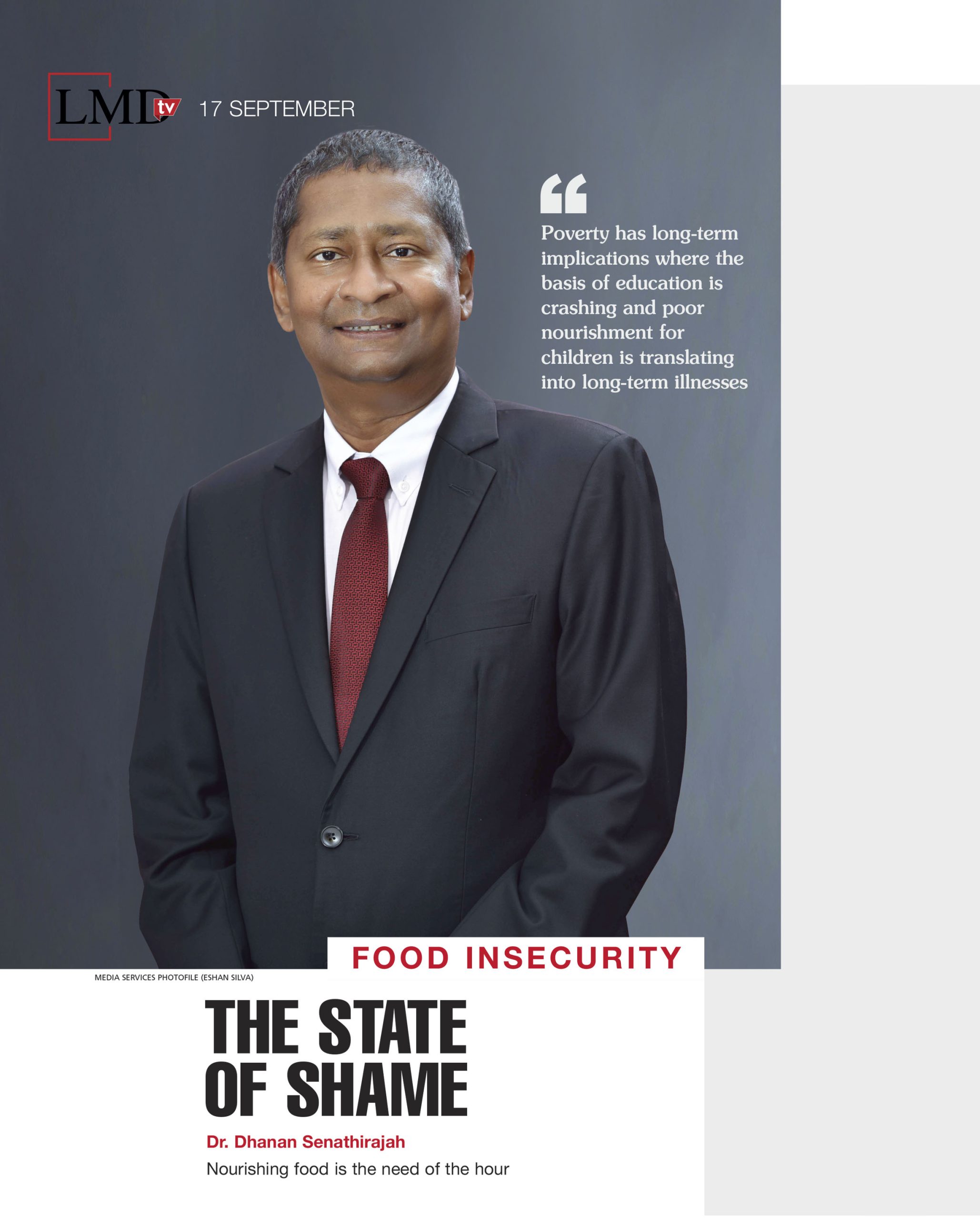LMDtv 2
According to a World Bank report released in April, despite Sri Lanka’s economy growing steadily in the aftermath of the economic crisis, approximately a third of the population remains in poverty – or is at risk of falling back into poverty.
“After the war, Sri Lanka saw its poverty levels decrease from 14.5 percent to 4.5 percent in 2010. A subsequent series of unfortunate events that included the Easter Sunday attacks, the pandemic and the economic crisis increased our poverty levels to over 33 percent, and now it stands at about 25 percent,” the National Director of World Vision Lanka Dr. Dhanan Senathirajah lamented, during a recent LMDtv interview.
The economic crisis affected a large number of people, especially those in the lower strata of society, he noted: “Poor communities are affected more when children are undernourished because parents are often forced to choose between buying medicine or schoolbooks, or feeding nourishing food to their kids.”
“Many children have stopped going to school because they don’t have food to take with them and money for books – and even bus fares at times,” he added. Malnutrition in the island has been steadily rising over the past couple of years.
Senathirajah elaborated: “If you visit an average school in the plantation community or rural areas and look into students’ lunch boxes, many of them bring only rice. Sometimes it’s rice with a couple of raw green chilies or a little gravy, or one vegetable. This is a crisis that we need to overcome if we want this nation to grow.”
He continued: “I have seen children coming to school and fainting during school hours because they haven’t had dinner or are in school on an empty stomach.”
“We have the opposite problem in urban areas due to obesity because children are eating mostly fast food, and live on a diet comprising carbs, fried items and food with little nutritional value. So problems exist at both ends of the spectrum,” he conceded.
As Senathirajah noted, malnutrition impacts society in various ways: “Poverty has long-term implications where the basis of education is crashing and poor nourishment for children is translating into long-term illnesses when they reach adulthood.”
“The lack of nourishment also means that their immune systems are weak. So when epidemics such as dengue and other vector borne diseases occur, their bodies aren’t strong enough to fight back,” he explained.
Nourishing food is the most urgent human need in Sri Lanka today, Senathirajah emphasised: “As a country, we have been blessed in so many ways – we have so much space for food production and anything we plant will grow in our nutrient rich soil.”
He also noted that despite all this, Sri Lanka still imports a majority of its food.
“The basic solution is to increase our food production; and this can be done in many ways. I’m a firm believer in economies of scale. Firstly, we need to encourage corporates and entrepreneurs to engage in large-scale farming so that food can be affordable for all,” Senathirajah urged.
He continued: “Secondly, every household should be encouraged to engage in climate smart agriculture in their home gardens so that they will have access to some level of nutrition all year round. This need not be limited to growing vegetables; it can include livestock such as chickens, goats etc. This way, they will have access to protein as well.”
“Thirdly, we need to align government policies with those of the private sector and the latter must be encouraged to get involved in food production. Corporates can play a major role in helping the country achieve a degree of food security and avert an acute food crisis.”
“I believe this problem can be resolved within a couple of years if all the players come together. The government can only lay down policies so it’s up to the nation, entrepreneurs, the private sector and individuals to take this on as a challenge,” he concluded.





